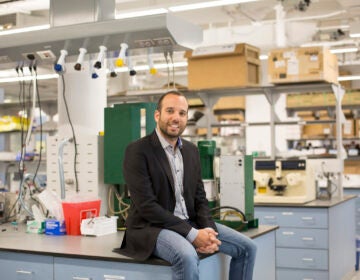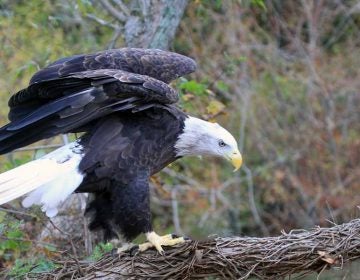Discovery science didn’t end with Darwin
In remote British Columbia, biologists document species that have adapted to the cold. The goal: create a baseline for the region before climate shifts change the ecosystem.
Listen 11:33-
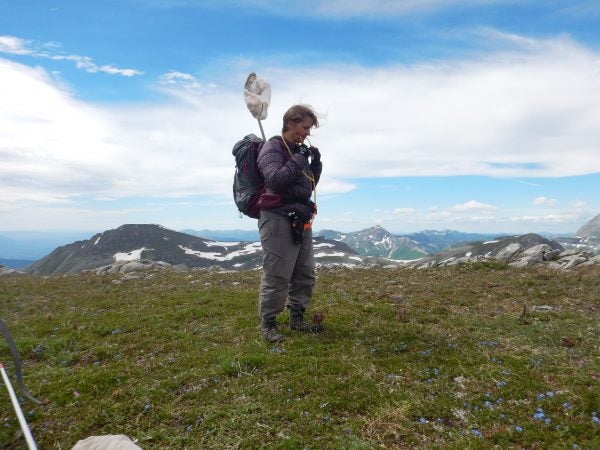
Claudia Copley begins her work collecting insects and spiders on Mt. Whitford, British Columbia. Copley manages the entomology collection at the Royal BC Museum in Victoria, British Columbia. (Molly Segal)
-
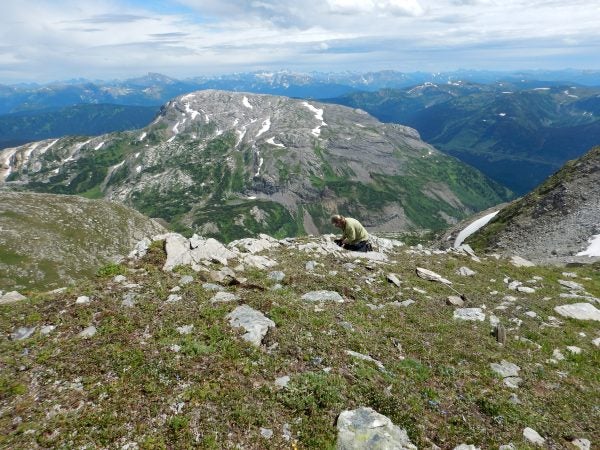
Darren Copley uses an aspirator to suction up a spider on Mt. Whitford, British Columbia. Copley works prepares birds and mammals at the Royal BC Museum, and has also trained to collect spiders and insects for the museum’s collection. (Molly Segal)
-

British Columbia’s Hart Mountain range is nestled in between areas heavily relied on for industry, including metallurgical coal mining.(Molly Segal)
-
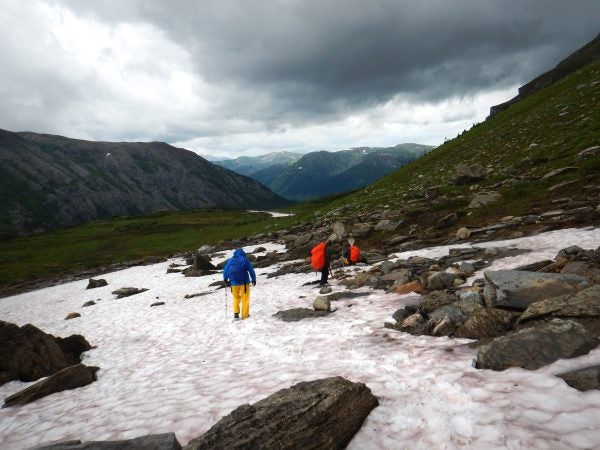
(From left to right) Robb Bennett, Darren Copley and Claudia Copley stop to look for spiders while hiking back to camp in an impending storm. (Molly Segal)
-
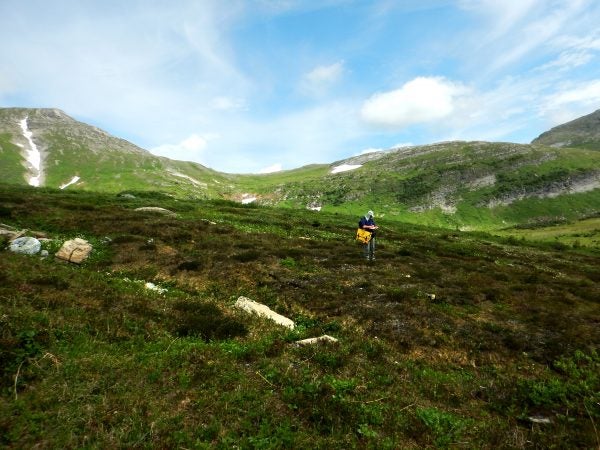
Ken Marr, curator of botany at the Royal BC Museum, notes down a GPS location before collecting plants in the area. (Molly Segal)
A helicopter lands at the top of a mountain in British Columbia’s Hart Mountains, and a trio of biologists get out.
“Wind is a real bother today,” says botanist Ken Marr as a gust rips paper and plants out of his hands.
Marr, curator of botany at the Royal BC Museum, uses a screwdriver — or, as he jokes, his plant extractor — to dig up samples of the small plants that carve out a life on this cold, windy peak.
He and the other scientists are here to help build the museum’s catalogue of species samples from remote, northern alpine areas across British Columbia. Since 2002, Marr’s spent his summers sampling plant life across the area.
“There’s a whole lot that isn’t known about the distribution of plants in the province, especially the alpine plants,” Marr says.
In 2014, he joined up with entomologists (who collect insects and spiders) to conduct larger field expeditions. This year’s field trip includes a team of five scientists from the Royal BC Museum.
On the first leg of the journey, they were also joined by others from the Yellowstone to Yukon Conservation Initiative, a group that contributed funding.
“Most of our spiders are 2-3 mm long,” says Darren Copley as he turns over a rock — a potential home for these tiny arachnids.
A piece of rubber tubing hangs from his mouth, over his shoulder, connecting to a plexiglass tube that he aims at the spiders under the rocks. This aspirator lets him suction up spiders without damaging them.
He’s hunting pristine museum specimens, which will be preserved, catalogued and stored indefinitely.
The focus is on spiders, but the scientists also collect flies, bees, wasps and beetles while they’re here.
“It’s kind of a … mass killing spree,” says Darren Copley, who usually prepares bird and mammal specimens for the museum. “It’s the only thing we don’t like about what we do.”
But it’s a killing spree with a purpose.
“This is a for research,” he says. “It’s a voucher — it’s a specimen showing it was here at this point in time.”
Survey work like this creates a baseline by cataloguing what species live in a certain place at a certain time. That knowledge allows other scientists to follow up later and ask questions about how climate, industry or development may be changing an ecosystem of species over time.
“We want to make it as efficient as possible and collect everything we can,” says Claudia Copley, Entomology Collections Manager at the Royal BC Museum, as she suctions up a beetle with an aspirator.
“Then one day somebody will come who is interested in, maybe, click beetles, and they’ll be really grateful that we were collecting in such a hard to reach place,” she says.
The scientists plan to spend three nights near Mt. Whitford before catching a helicopter to another part of the Hart Mountains.
The area they are exploring is nestled in part of British Columbia’s southern Peace Region, which is known as a bit of a hub for the province’s natural resource industries, such as metallurgical coal mining, oil and gas exploration, hydro-electric dams and forestry, as well as the access roads and electricity lines that come with this kind of development.
Saulteau and West Moberly First Nations people have been working for years to preserve the shrinking caribou herds in the region. So far, though, the tiny spiders here haven’t gotten similar attention and protection.
It’s unclear what species may be at risk because so much is still unknown.
“We’re really not at the stage where we’re doing anything ecological. We still don’t even know what spiders live in the province,” says Darren Copley.
Each year, the Royal BC Museum scientists add to a growing list of spiders found in British Columbia, often discovering species that are new to science, which they describe and name in scientific journals.
Northern, high-elevation places are some of the most sensitive to a changing climate, so it’s a bit of a race to document what’s living here.
“The species that occur at these elevations are adapted for these cold temperatures,” says Claudia Copley. “If they live at the top of the cold mountain now, there’s nowhere left for them to go when the climate around them warms up.”
She says that, as the conversation around climate change switches from prevention to adaptation to an altered environment, ecosystems that are high up and northern don’t have that option.
“So there really will be, potentially, loss of species, and we don’t know which ones and we don’t know how many,” says Claudia Copley. “It’s just a guessing game.”
WHYY is your source for fact-based, in-depth journalism and information. As a nonprofit organization, we rely on financial support from readers like you. Please give today.




